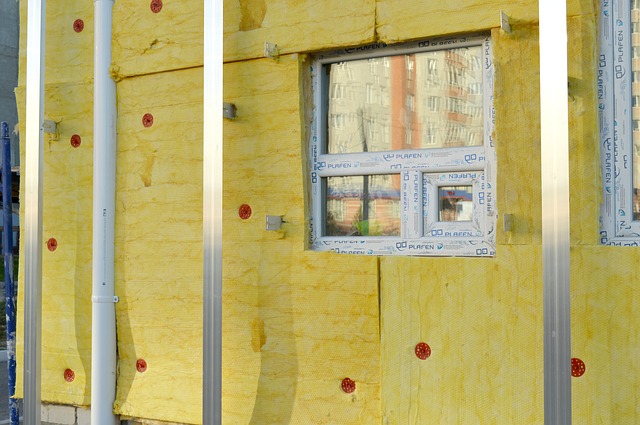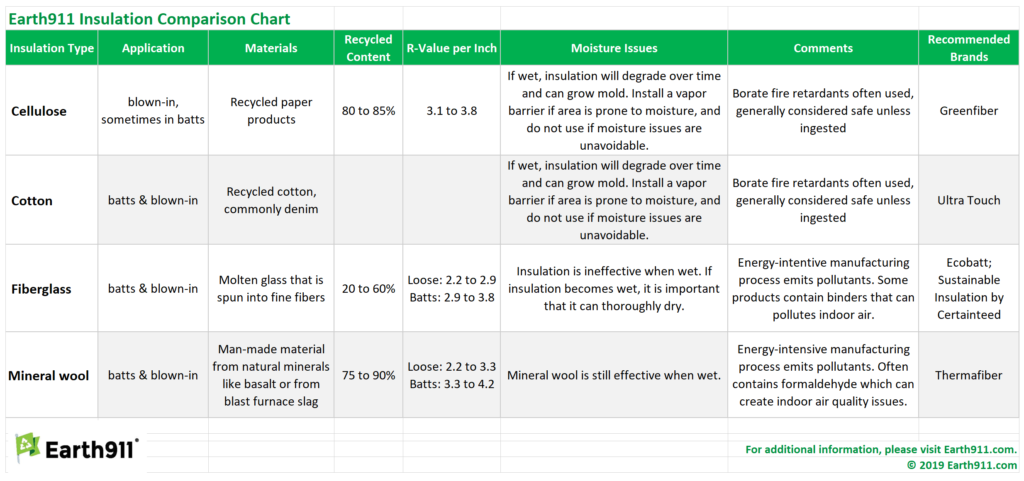Pliny the Elder was the first to write that home is where the heart is, but many older homes are drafty and have cold floors and uneven temperatures that can chill an environmentally aware heart. Do you remember the nursery rhyme about a cold, old house where even the mouse is cold? The good news for the mouse and anyone else concerned is that there are many weatherization products on the market to make homes more comfortable and energy efficient. Insulation is one of them.
You might think that any insulation product that lasts decades and saves a decent amount of energy would be green. Unfortunately, many of the home insulation products on the market contain potent greenhouse gases or release chemicals, degrading indoor air quality.
Whenever possible, choose insulation products that:

- Contain natural materials
- Do not off-gas potent VOCs or contain asbestos or formaldehyde
- Are GreenGuard-certified products
- Do not contain harmful flame retardants or binders
Why Is Home Insulation Important?
Home heating and cooling are responsible for nearly half of all home energy use. Insulation is important because heat flows from warmer to cooler spaces until there isn’t a temperature difference. In the winter, heat flows from heated spaces in homes to unheated attics, basements, garages and the outdoors. In the cooling season, heat flows from outside the home to the interior. Insulation stops the flow of heat.
Insulating the attic is a top priority for reducing home energy use and many homeowners can do this themselves. It is essential that insulation is properly installed to ensure effectiveness, so consult a specialist as needed. Moisture problems and improper installation can cause mold and reduce the effectiveness of the insulation.
What Is the R-Value of Insulation?
The thermal resistance of a material is measured by its R-value. Insulation with a higher R-value is more effective in stopping the transfer of heat than insulation with a low R-value. The recommended R-value of insulation varies by climate and location. The U.S. Department of Energy has guidelines for the R-value of insulation in the attic, walls, and floors that varies by location.
Home Insulation Materials to Consider
Let’s look at some of the top insulation products on the market to see which save the most energy, promote healthy indoor air quality, and are the most sustainable.
Cellulose Insulation
This product is blown into wall and ceiling cavities and is not suitable for applications where it will come into contact with excessive moisture or water. Cellulose insulation that is blown in dry can also settle over time so proper installation is crucial.
Comprised primarily of post-consumer recycled paper, cellulose insulation products have some of the highest environmental ratings among insulation products on the market. The manufacturing process for cellulose insulation is up to 30 times less energy-intensive than making fiberglass or wool mineral insulation. In addition, cellulose products do not off-gas; they help maintain healthy indoor air quality. Nontoxic boron is often added as a flame retardant and is considered safe unless ingested.
Greenfiber insulation products are free of asbestos, formaldehyde, and glass fibers and the products have a Class I fire rating. The company has eight manufacturing plants dispersed throughout North America, and the products contain 85 percent recycled materials from local sources. This enables Greenfiber to use short-haul transportation to reduce fossil fuel consumption.
Cotton Insulation
Available in batts and as loose-fill, cotton insulation has many of the same qualities as cellulose insulation.
Like cellulose, cotton shouldn’t be installed in places with moisture issues, and it contains a high percentage of post-consumer recycled content. Typically manufactured from recycled denim, cotton insulation also commonly contains nontoxic boron as a flame retardant and it has a similar R-value to cellulose. It does typically cost more than other types of insulation.
Ultra Touch cotton insulation contains 80 percent recycled content, does not contain formaldehyde, and is a LEED-eligible product.
Materials to Consider With Caution
Although both materials are energy-intensive to manufacture, it is worth considering fiberglass or mineral wool insulation when moisture is an unavoidable issue. Homes in rainy or humid regions may benefit from these less environmentally friendly but effective materials.
Fiberglass Insulation
The most familiar form of home insulation, fiberglass product often comes in pink, white, yellow, or green batts depending on the manufacturer. Fiberglass insulation has a spongy feel and was first developed in the 1930s. Fiberglass batt insulation can be stapled into place with the backing facing the warm side of the dwelling. This insulation can be purchased in bags where it is blown into a wall, beneath the floor, and into attic cavities.
If disturbed, fiberglass insulation releases tiny particles that can irritate the eyes, skin, and throat, so exercise care if you install it yourself. The binder in fiberglass products used to commonly contain formaldehyde — although this practice is being phased out.
Unfortunately, manufacturing fiberglass insulation is a very energy intensive process that uses fossil fuels and causes air pollution. Although most fiberglass products contain at least 20 percent recycled content, there are greener types of insulation on the market. It is worth considering fiberglass insulation for applications where the insulation might occasionally get wet but will be able to dry out completely, or when the project budget is small.
If you opt for fiberglass insulation, look for a formaldehyde-free product that is certified by GreenGuard, such as EcoBatt and Sustainable Insulation by Certainteed. Their bio-based binders do not contain phenol, formaldehyde, acrylics, or artificial colors.
Mineral Wool Insulation
This type of insulation is comprised of natural minerals, like basalt, or from blast furnace slag. It is available in batts and loose fill. Although it is more expensive than cellulose and fiberglass, it has excellent natural flame retardant properties and continues to function even when wet.
Like fiberglass, mineral wool is very energy intensive to manufacture. It still commonly contains phenol-formaldehyde and can pollute indoor air.
If you decide to go with mineral wool insulation, Thermafiber has formaldehyde-free mineral wool products that are GreenGuard certified.
Insulation to Avoid
Some types of insulation contain toxic flame retardants, formaldehyde, and volatile organic compounds that can create indoor air quality issues and damage the environment.
Polyurethane Foam Insulation
Although spray foam is effective in reaching gaps, cracks, and crevices that other products cannot, it comes at a high environmental price. Some spray foams contain methylene diphenyl diisocyanate (MDI), which can cause asthma and lung damage to exposed workers. Eye, skin, and respiratory protection is required when applying the product. Spray foam can also contain TCPP, a toxic flame retardant.
When applied, it can continue to significantly off-gas pollutants, creating long-term indoor air quality issues. Unfortunately, polyurethane foam insulation is difficult to remove if it becomes problematic and is not recommended by the Environmental Working Group.
Rigid Foam With Flame Retardants
Most rigid foam insulation, including EPS and XPS, contain the toxic flame retardant HBCD. It was banned in the European Union in 2015 and the EPA considers it to have potential health hazards to humans due to reproductive, developmental, and neurological effects on animals. In addition to potentially contaminating the home, it is particularly hazardous during manufacture and disposal and is not recommended by the Environmental Working Group.
Comparison Chart
To view our complete printable comparison chart, click the image below.
This article was originally published on March 21, 2019.
The post Greenest Insulation Products for the Home appeared first on Earth 911.









